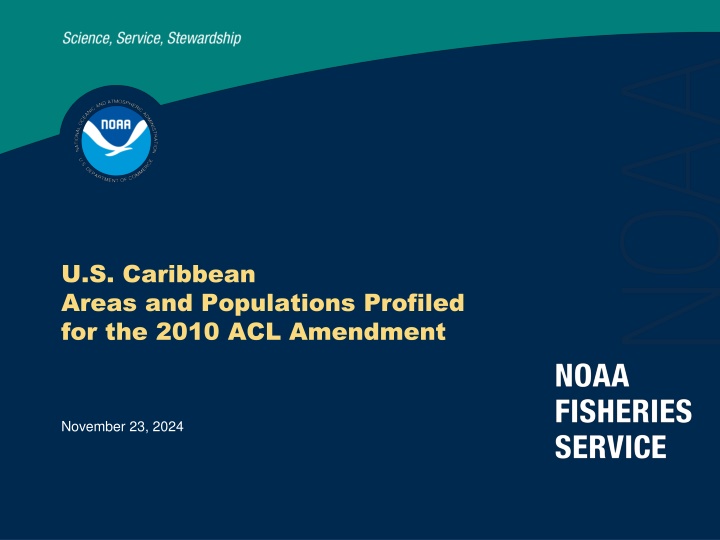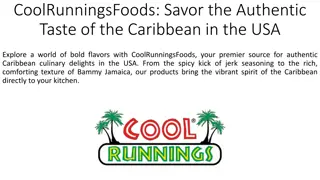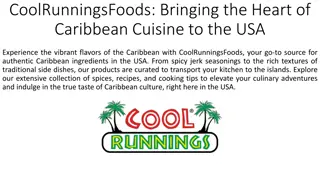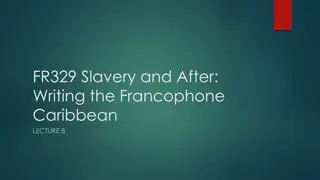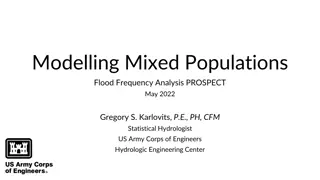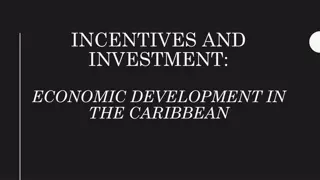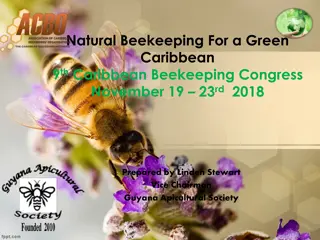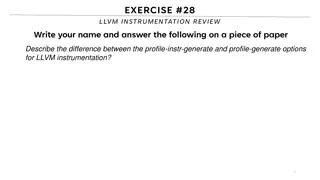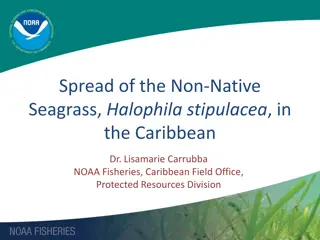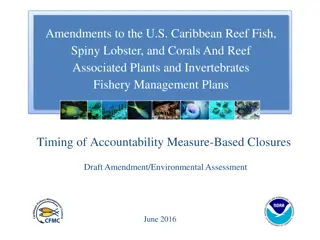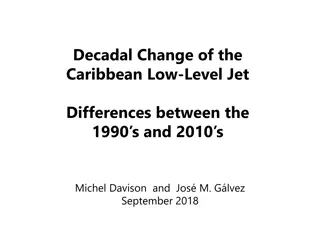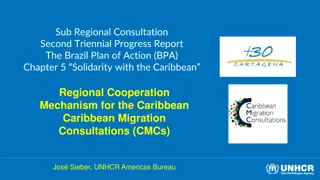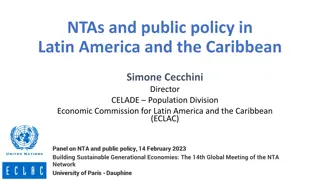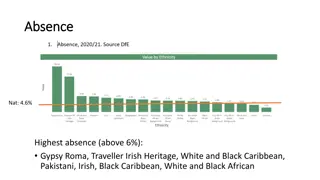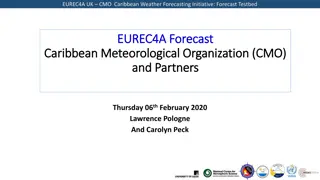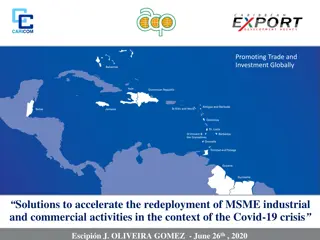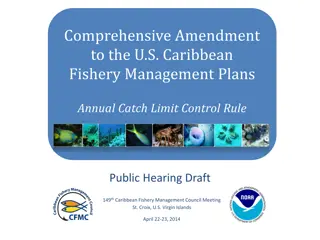U.S. Caribbean Areas & Populations 2010 Profile: Amendment Overview
The presentation outlines mandates under NEPA and Magnuson-Stevens Act for considering affected populations in U.S. Caribbean areas. It covers demographics, poverty rates, and racial populations, focusing on St. Croix, St. Thomas/St. John, and Puerto Rico.
Download Presentation

Please find below an Image/Link to download the presentation.
The content on the website is provided AS IS for your information and personal use only. It may not be sold, licensed, or shared on other websites without obtaining consent from the author.If you encounter any issues during the download, it is possible that the publisher has removed the file from their server.
You are allowed to download the files provided on this website for personal or commercial use, subject to the condition that they are used lawfully. All files are the property of their respective owners.
The content on the website is provided AS IS for your information and personal use only. It may not be sold, licensed, or shared on other websites without obtaining consent from the author.
E N D
Presentation Transcript
U.S. Caribbean Areas and Populations Profiled for the 2010 ACL Amendment November 23, 2024
Outline of Presentation 1. Mandates to consider for determining affected populations. 2. U.S. Caribbean populations. 3. St. Croix populations. 4. St. Thomas/St. John populations. 5. Puerto Rico populations. 2
Mandates 1. National Environmental Policy Act: 1. Racial and ethnic minorities 2. Low-income population(s) 3. Other segment of population 2. Magnuson Stevens Act: 1. Fishing communities 3
NEPA and Environmental Justice EPA considers a disproportionately high and adverse effect or impact to be one that: (1) is predominately borne by any segment of the population, including a minority and/or a low- income population; or (2) will be suffered by a minority and/or low-income population and is appreciably more severe, or greater in magnitude, than the adverse effect or impact that will be suffered by a non-minority population and/or non- low-income population. 4
U.S. Caribbean Population (Source: Census 2000) 4% 7% 4% White 10% Black or African American Other Hispanic or Latino Not Hispanic or Latino Two or more races 96% 79% Hispanic or Latino Race 5
U.S. Caribbean Population (Source: 2000 Census) In Poverty 48% Not In Poverty 52% Percent of Individuals. 6
Populations of Affected Areas Proposed ACL Amendment divides the ACLs and EEZ into three management areas: St. Croix, St. Thomas/St. John and Puerto Rico. Affected U.S. Caribbean population similarly divided for purposes of assessing and comparing areas and impacts. 7
Racial Populations of Island Areas (Source: 2000 Census) 50,000 3,500,000 45,000 Puerto Rico 3,000,000 40,000 35,000 2,500,000 30,000 2,000,000 25,000 STT/STJ 1,500,000 20,000 15,000 1,000,000 STX 10,000 500,000 5,000 0 0 White Black or African American Other Two or more races 8
Hispanic/Latino Populations of Island Areas (Source: 2000 Census) 60,000 Puerto Rico 4,000,000 50,000 3,500,000 40,000 3,000,000 Hispanic or Latino 2,500,000 30,000 2,000,000 1,500,000 Not Hispanic or Latino 20,000 1,000,000 500,000 10,000 0 Hispanic or Latino Not Hispanic or Latino 0 9
Poverty Rates of Island Areas (Source: 2000 Census) 120 100 80 Not in Poverty % of 60 Individuals In Poverty 40 20 0 STX STT/STJ PR 10
Annual Commercial Landings of Island Areas 6,000,000 5,000,000 STX 4,000,000 Lbs STT/STJ 3,000,000 PR* 2,000,000 1,000,000 0 1980 1990 2000 *1980 Landings not included 11
Per Capita Annual Landings of Island Areas 16 14 12 STX 10 Lbs 8 STT/STJ 6 PR* 4 2 0 1980 1990 2000 *1980 Landings not included. 12
Racial/Ethnic Characteristics of Island Area Fishermen (Source: Kojis 2004) 60 No racial/ethnic data for Puerto Rico commercial fishermen 50 40 % Commercial Fishermen 30 STX 20 STT/STJ 10 0 13
U.S. Caribbean Commercial Fishermen by Island Areas (2008 figures) 1000 900 800 700 600 STX 500 STT/STJ PR 400 300 200 100 0 STX STT/STJ PR 14
Percent of Household Income from Fishing (Source: Kojis 2004, Matos- Caraballo 2009) 100% 90% % Fishermen 80% 0 to 24 Percent 70% 60% 50% 25 to 50 Percent 40% 30% 51 to 100 Percent 20% 10% 0% STX STT/STJ PR 15
Targeted Species by Island Area* (Source: Kojis 2004, Matos-Caraballo 2009) 90 80 70 60 50 % Commercial Fishermen STX 40 STT/STJ PR 30 20 10 0 Reef Fish Deepwater Snapper Conch Lobster *include all targeted species included 16
St. Croix 17
St. Croix: Where do Cruzan commercial fishermen live? 18
Why STX Fishermen Spread Out 1. Increased tourism resulted in increased demand for land, and the price of land increased substantially from 1950 to 1970, especially close to water. Increased immigration resulted in increased demand for goods and services, which increased cost of living and property taxes. Many native-born Virgin Islands were compelled to sell their land to cope with rising expenses. Development of fiberglass boats and outboard motors, which reduced cost of boat and time to fishing areas. Fishermen could trailer their boats from their homes, reducing/eliminating mooring fees. (Example of capital flight on island-scale). Expansion of infrastructure to inland areas. 2. 3. 4. 20
St. Croix Fishermens Targeted Species (Kojis 2004) Proportion of Commercial Fishermen 84.7% 42.3% 40.5% 39.1% 37.2% 33.0% 14.4% 4.7% Targeted Species Reef fish Deepwater snapper Lobster Conch Coastal pelagics Deepwater pelagics Bait fish Whelk 21
St. Croix Fishing and Fisheries Related Businesses 217 licensed commercial fishermen and 225 boats owned in 2003. 223 license commercial fishermen in 2008. Landings Sites: Fredericksted, Salt River, Christiansted, Gallows Bay, Altona Lagoon, Teague Bay, Solitude Bay, Turner Hole, Great Pond, Molasses Pier. Up to 4 fish markets with 15 employees (2007 Economic Census). 1 establishment in Charter Boat Industry (2007 Econ. Census). Up to 6 diving equipment stores with 20 employees (2007 Econ. Census). Also some full-service and limited service eating establishments serve locally caught finfish and shellfish. 22
St. Croix Recreational and Subsistence Fishermen Don t know how many or where they live. 566 recreational fishing vessels. 12 USVI fishermen registered National Angler Registry (03/09/2010). 23
St. Thomas/St. John Where do St. Thomas/St. John commercial fishermen live? 25
St. Thomas/St. John Fishermens Targeted Species (Kojis 2004) Proportion of Commercial Fishermen 77.7% 53.6% 35.7% 29.5% 14.3% 9.8% 8.9% 4.5% Targeted Species Reef fish Coastal pelagics Lobster Bait fish Whelk Deepwater pelagics Conch Deepwater snapper 28
St. Thomas/St. John Fishing and Fisheries Related Businesses 116 licensed commercial fishermen and 135 boats owned in 2003. 160 licensed commercial fishermen in 2008. Landings Sites: Frenchtown, Hull Bay, Benner Bay, Seaside Inn, Water Bay, Krum Bay, Mandahl Bay, Red Hook and other St. Thomas sites, Cruz Bay, Coral Bay and other St. John sites. Up to 15 fish markets with 98 employees (2007 Econ. Census). Up to 12 charter and party fishing operations with 20 to 99 employees (2007 Econ. Census). Up to 7 dive shops with 20 to 99 employees (2007 Econ. Census). Some full-service and limited services eating establishments that serve locally caught finfish and shellfish. 29
St. Thomas/St. John Recreational & Subsistence Fishermen Don t know how many or where they live. Mateo (2000) suggests up to 150 offshore recreational fishing vessels. 12 USVI fishermen registered National Angler Registry (03/09/2010). 30
Puerto Rico 31
Where Puerto Rico Commercial Fishermen Live? 350 300 250 200 Number of Fishermen 150 100 50 0 North South East West Coast 32
Percent of Puerto Rican Active Commercial Fishermen s Household Income from Fishing (Matos Caraballo 2009) Percent of HH Income from Fishing North Coast Fishers 24.7% 3.1% 29.6% 22.2% 14.8% 4.9% 0.6% South Coast Fishers 52.2% 7.8% 28.0% 4.7% 4.3% 3.0% 0.0% East Coast Fishers 55.1% 3.2% 10.9% 13.5% 3.8% 12.3% 1.3% West Coast Fishers 61.1% 9.6% 19.1% 4.9% 2.8% 0.9% 1.5% 100 75 to 99 50 to 74 25 to 49 1 to 24 0 No answer 33
Puerto Rico Commercial Fishermen s Targeted Species Targeted Species North Coast Fishers South Coast Fishers East Coast Fishers West Coast Fishers Reef fish 88% 88% 76% 65% Deepwater snapper 72% 4% 72% 52% Pelagics 65% 30% 67% 27% Lobster 28% 57% 65% 47% Bait fish 53% 31% 33% 19% Conch 13% 45% 35% 35% Octopus 2% 19% 0% 1% Land Crab 9% 6% 11% 2% S. Gobies 8% 1% 0% 0% Ornamental 1% 1% 2% 2% 34
Puerto Rico Fishing and Fisheries Related Businesses 874 active licensed commercial fishermen and 690 fishing vessels in 2008. 5 establishments in Fish & Seafood Markets Industry with 0 to 19 employees in 2008 (2008 County Business Patterns) 9 establishments in Charter and Party Fishing Boat Industry with 100 to 249 employees in 2008 (2008 County Business Patterns). Up to 99 diving equipment stores with 261 employees (2008 County Business Patterns). Some full-service and limited-service eating establishments that serve locally caught finfish and shellfish. 35
Puerto Rico Recreational and Subsistence Fishermen Don t know where they live or how many. 582 recreational fishers registered with National Angler Registry (03/09/2010). 36
Brief Summary U.S. Caribbean Population and Island areas characterized by high percents of racial/ethnic minorities and high poverty rates. Island areas populations and their fishing populations different racially/ethnically. Puerto Rico has highest annual commercial landings. St. Croix and St. Thomas/St. John have substantially higher per capita annual commercial landings than Puerto Rico. Larger percents of St. Thomas/St. John and Puerto Rican fishermen have 51% to 100% of household income from fishing. Larger percent of St. Croix and St. Thomas/St. John fishermen target reef fish and deepwater snapper then Puerto Rican fishermen. Significantly larger percent of St. Croix fishermen target conch. 37
The End 38
